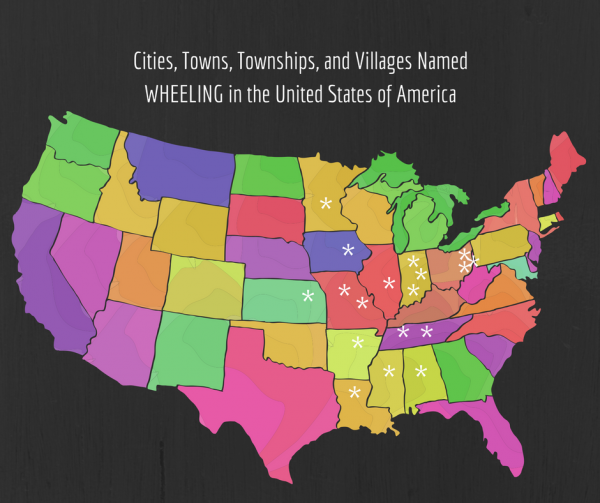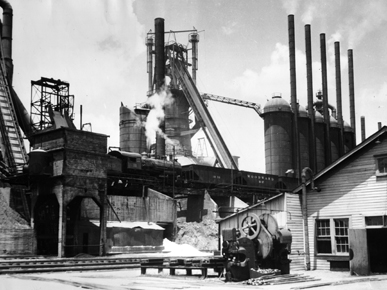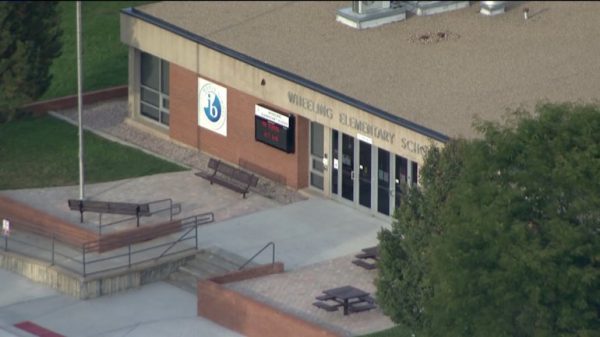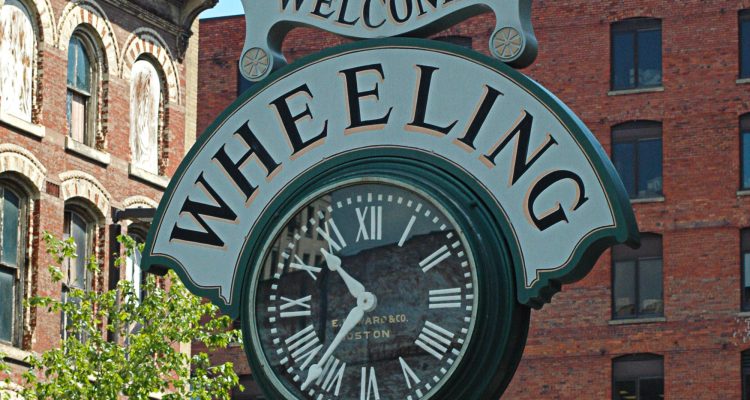EDITOR’S NOTE: Part one of this essay explored several of the most commonly known Wheelings. Today’s part two explores Wheelings in Indiana, the South and in places rather unexpected.
The Indiana Wheelings
Indiana is home to three Wheelings — each with its own story. The Wheeling in Carroll County, Ind., was named for Wheeling, W.Va., and platted in 1837. It was located along the Michigan Road, which was a busy path during the settling of the American West. Wheeling in Carroll County, Ind., was known for the Wheeling Choral Union, which formed in 1878 when men began singing together informally in a town barbershop. The Choral Union provided music instruction around the region and continues to be held in high regard. Like so many of the other Wheelings in the country, this Wheeling today is composed of just a few structures. According to Carroll County historian Mark A. Smith, “You need to drive really slowly, or you will miss the entire town.”
The Wheeling in Delaware County was first settled in the 1770s by the Lenape people, who had been moved from their tribal lands in the Mid-Atlantic region to Ohio and eastern Indiana. It is not clear from records whether this Wheeling was already the local name of the region used by the Lenape people (the same tribe that named Wheeling, W.Va.), or if it was given that name by the white settlers who arrived after 1818, when the tribes were forced to cede this land to the federal government and move farther west. Official records note that Wheeling was once named Cranberry and then renamed Wheeling in 1838. Indeed, several early settlers of the region were from near Wheeling, W.Va., including Thomas Beouy. According to an 1894 book celebrating prominent residents of Delaware County, Thomas Beouy was “one of the old settlers of this county and township, and was at Wheeling, W.Va., when that city was a mere village.” Wheeling was an important town during the settlement of the West. Wheeling Pike, which connected Muncie and Wheeling, Ind., was a major mail route. Today, Wheeling, Carroll County, Ind., is an unincorporated community eclipsed by nearby Muncie. In 2015, Muncie police went on a drug raid and found 220K of silver bars in a home in Wheeling.
The village of Wheeling, Gibson County, Ind., was platted July 4, 1856. It was first called Kirksville, sometimes spelled Kirkville. It was renamed Wheeling after the city in West Virginia. At one time, Wheeling, Ind., was quite a business center, but a major highway went in the area and took traffic away from Wheeling. As early as 1884, according to “History of Gibson County, Indiana,” “nothing remains but a few time-worn and shattered buildings.” The legacy of those early white settlers is the Wheeling Bridge, which spans the Patoka River. It was built in 1877. In 2000, the Wheeling Bridge underwent a major renovation and is a destination on Gibson County history tours.

Wheelings of the South
Established in the early 19th century following the forced removal of the Chickasaw Indians, Wheeling was one of the first towns in the newly created Itawamba County, Miss. This Wheeling was a port on the Tombigbee River, located a few miles below the village of Van Buren, which was just beginning to boom. (Van Buren was named after President Van Buren who ordered the removal of the Chickasaw and other Indian tribes via the infamous “Trail of Tears.”) Wheeling had a hotel, which was owned by Jefferson Foster, and merchants, such as Jowers and Holcomb, but “its life was very short.” According to a 1902 book chapter by the Mississippi State Historical Society called “Extinct Towns and Villages of Mississippi,” Wheeling in Itawamba County, Miss., only lasted for two or three years before it was absorbed by Van Buren, which began its own decline after the Mobile and Ohio Railroad came to the area in the 1850s. Both Van Buren and Wheeling are ghost towns today reclaimed by the forest on the east bank of the Tennessee–Tombigbee Waterway.
Now Samburg, Obion County, Tenn., this “hamlet,” as it is called in “Tennessee Place Names” (2001), was once called Wheeling after a store owner with the surname Wheeling. When the residents attempted to establish a post office, they learned another Wheeling, Tenn., already existed. Since Mr. Wheeling had “run off,” they decided to name the town Samburg after the new store owner.
In 1869 Wheeling industrialist, Stimson Harvey Woodward, one of the founders of LaBelle Iron Works (later Wheeling Steel), visited the greater Birmingham area of Alabama after learning about iron and coal deposits in the area. Although Woodward died before he ever saw the blast furnace fired, his sons went on to create Woodward Iron Company and urged the development of a local railroad connection. The town of Wheeling, Jefferson County, Ala., was formed to honor Woodward’s roots in Wheeling, W.Va. In 1885, three brothers named Lipscomb opened a general store. A rail line connecting the area with Bessemer and Birmingham was established by 1890, and the town became known as Lipscomb Station after one of the Lipscomb brothers. The town was incorporated in June 1910 as Lipscomb. Although Lipscomb has seen a massive drop in population over the past 50 years, it remains a functioning city under constant threat of incorporation with nearby and much larger Birmingham.

The most enduring of all of the southern Wheelings is located in Winn Parish, La. The stories about its founding and decline are not nearly as interesting as the events that occurred in this little port town in the 1870s. During this time, central Louisiana was ruled by the West-Kimbrell Clan, who was known as the “Nightriders” because of the dastardly deeds they did under the cover of darkness. They were headquartered in Wheeling, La. Because Wheeling was on the Natchez Trace, many travelers went through Wheeling and even stopped there for the night. The Kimbrells owned a general store in Wheeling, which gave them easy access to people whose families might not miss them for weeks or even months. Their clan went on to murder dozens of people and steal their belongings. In the end, the remaining members were captured in Texas and hanged. Wheeling, La., still survives. References to Wheeling as a functioning community exist as late as December 2017.
Wheeling, Fulton County, Ark., is a small town off of Wheeling Road. The “Fulton County History Book”reports that Wheeling, Fulton County, Ark., existed by at least as early as 1859 when Mr. W.R. Chestnut from Georgia donated land for a building. Interestingly enough, “The post office in Wheeling was first established in 1887 by W.A. Richardson. In securing the post office, Mr. Richardson had to select a name. He chose the name Wheeling in honor of a farmer’s union, which was strong at that time. They had a wheel for their emblem — thus the name.” In this case, it is hard to know the roots of the name of the farmer’s union or if the area was known as Wheeling before the union existed. According to Rebecca Plumlee Phillips of the Fulton County Heritage Foundation, all that remains in the area is the Wheeling Church of Christ.
Honorable Mentions
Along with Pittsburgh, St. Louis and other cities that facilitated Westward Expansion, Wheeling, W.Va., was once called The Gateway to the West. Long before Wheeling was the western terminus of the National Road, it was a busy port that sent boats of goods and people to the southern parts of the country to cities like Cincinnati and New Orleans. Wheeling’s importance increased further after the completion of the Wheeling Suspension Bridge in 1849, which allowed settlers to cross the Ohio River and continue on their journeys west.
This increased accessibility encouraged the creation of post offices in states throughout the country named after Wheeling, W.Va. While some of the Wheeling post offices were short-lived, many of them last well into the 1960s. In the 1800s, Wheeling post offices could be found in the following states, just to name a few: Missouri, Mississippi and Tennessee.
Although I have made many surprising discoveries during the course of this research, one of the most interesting discoveries is found in Aurora, Colo. In a beautiful neighborhood in Arapahoe County sits Wheeling Park and Wheeling Elementary. They share a plot of land bordered on one side by South Wheeling Street. Although other streets and place names in Aurora harken other states, such as Utah and Alaska, I cannot help but be fascinated by the story behind why Wheeling was the chosen name for these places. After much digging, I am sorry to report that I found none.

Wheeling’s Impact on the Country
As I discovered in my research, Wheeling has been incredibly influential in the U.S. Not only did our steel help build America, but our people went on to found communities of their own. It is my goal to eventually visit all of the Wheelings I have written about here in an effort to better understand Wheeling’s reach. To me, though, I will always have a place in my heart for my Wheeling: Wheeling, West, by God, Virginia.
Writer’s note: Special thanks to Bill Meloy from the California University of Pennsylvania Library, Mark A. Smith, Carroll County, Indiana Historian, and Tamara Gibbs, Camden-Jackson, Indiana Township Public Library for their research help.




